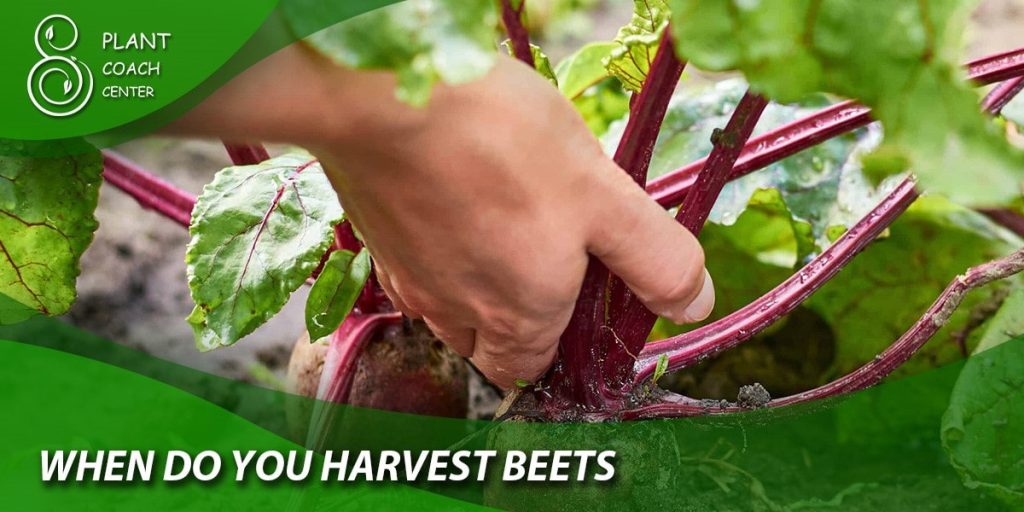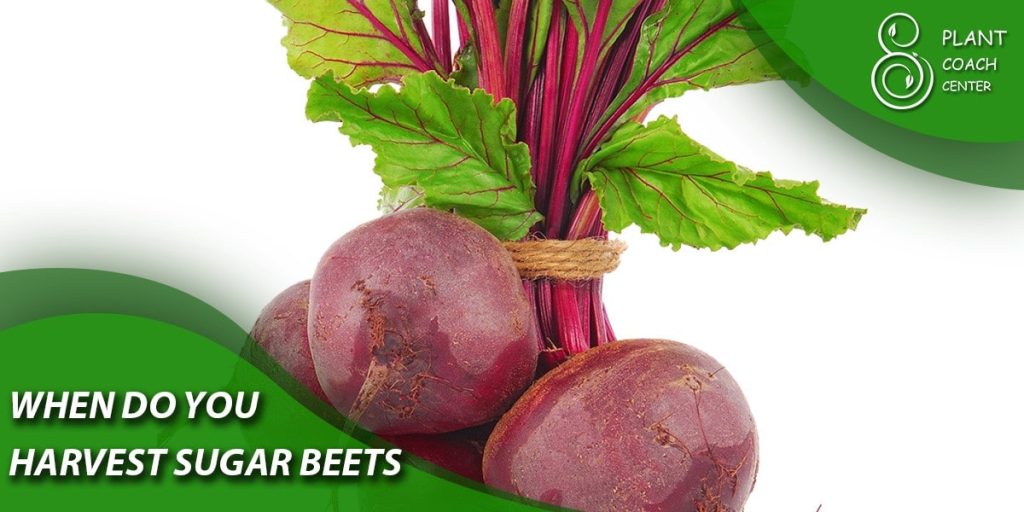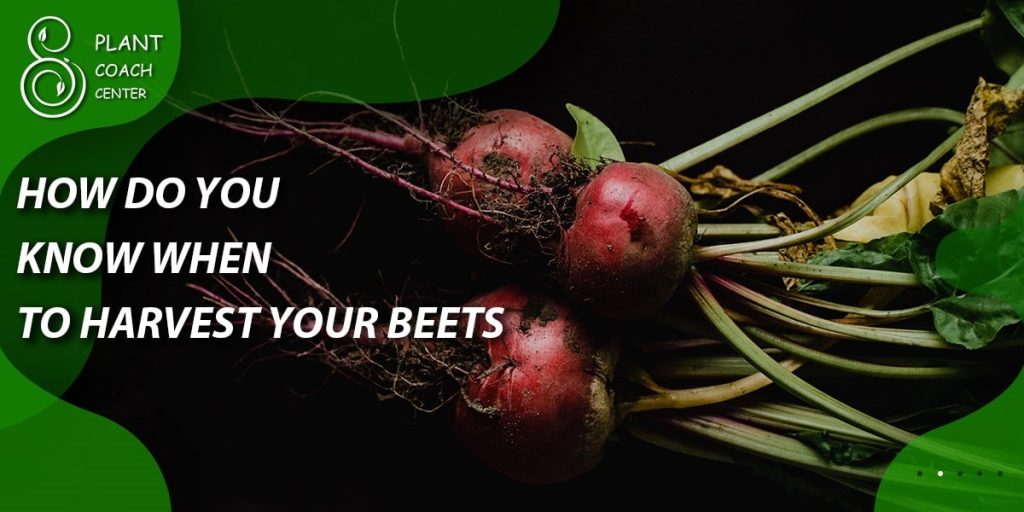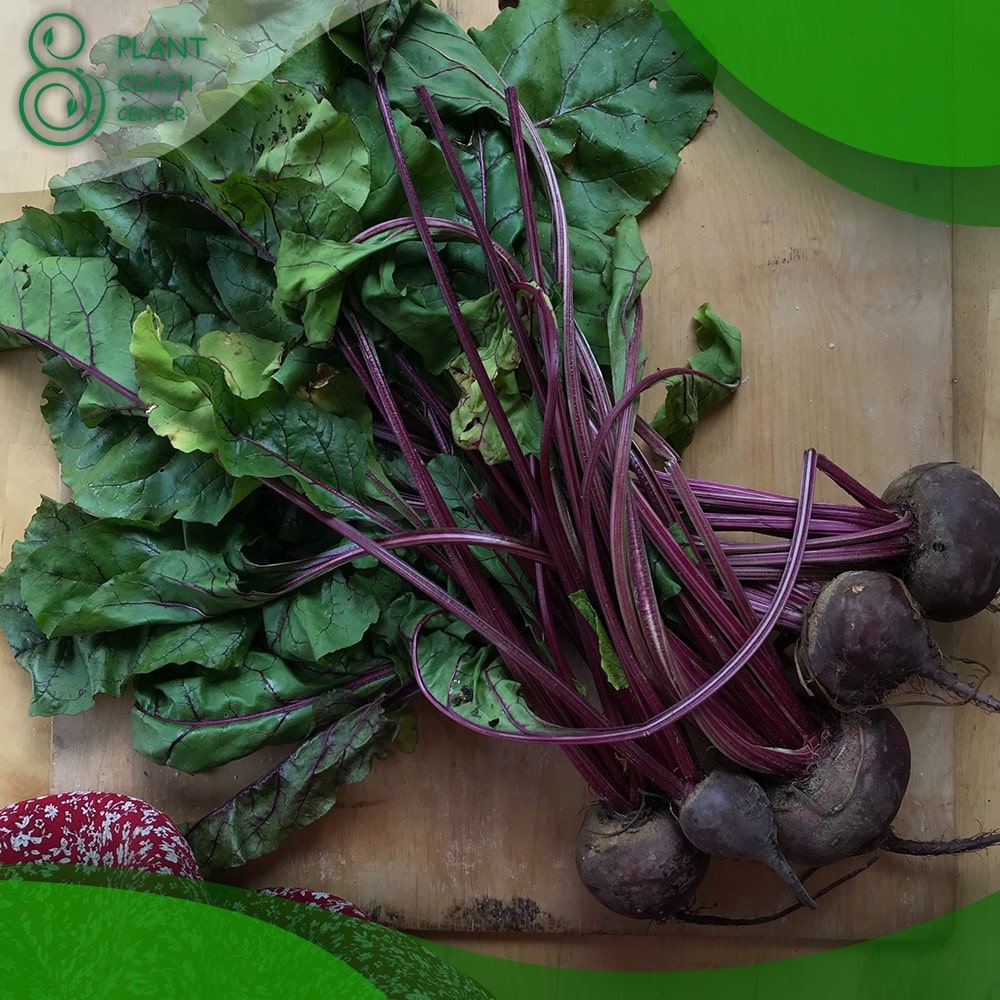When do you harvest beets?
Welcome to the vibrant world of beet harvesting! From their striking ruby-red hues to their earthy, sweet flavor, beets have captured food enthusiasts’ hearts and taste buds for centuries. Whether you’re an avid gardener eager to reap the rewards of your labor or a culinary adventurer seeking to elevate your dishes with fresh, homegrown produce, understanding the art of perfect beet harvest is essential.

Timing is everything regarding beets, as the moment of picking can significantly influence their taste, texture, and nutritional value. This comprehensive guide will delve into the enchanting journey of beet cultivation, unearthing the secrets of when and how to harvest these glorious gems from your garden.
By the end of this article, you’ll be equipped with the knowledge to detect the subtle cues of ripeness, factor in seasonal variations, and employ expert techniques to ensure your beets are nothing short of picture-perfect. So, let’s roll up our sleeves and embark on this harvest adventure together, celebrating nature’s bounty one beet at a time!
Beet It Right: Timing Matters!
When it comes to harvesting beets, timing truly is everything. The moment you decide to pluck these vibrant roots from the Soil can make a significant difference in their overall quality, flavor, and texture. While it might be tempting to rush the process and pick them as soon as they reach a reasonable size, exercising patience and waiting for the perfect moment will be well worth the effort.
Beets are biennial plants, which means they have a two-year life cycle. However, they are typically grown annually, with their roots being the edible part of the plant. The ideal time for harvesting beets depends on the variety you’re growing and your desired use.
For most beet varieties, the best time to harvest is when they reach maturity, typically around 55 to 70 days after sowing the seeds. To determine if your beets are ready for harvesting, keep an eye on their size. They should have reached a diameter of around 1.5 to 2 inches, and their tops should be about 3 to 4 inches tall. Don’t worry if the tops are more significant; they’re still perfectly edible and can be used in various dishes.
Another critical factor to consider is the weather. If you’re experiencing a spell of hot, dry weather, harvesting your beets a bit earlier than the recommended timeline is better. Extreme heat can cause the beets to become woody and tough, compromising their taste and texture.
On the other hand, if you’re growing beets in colder climates or during the fall season, you can let them stay in the ground for a little longer. Cooler temperatures help intensify the natural sugars in the beets, resulting in a sweeter and more flavorful harvest.
When harvesting, gently loosen the Soil around the beets with a garden fork or trowel to avoid damaging the tender roots. Grasp the tops firmly and pull upwards while wiggling the seeds free from the Soil. Beets can be stored in a cool, dark place for several weeks, so you can enjoy their delectable taste long after the harvesting season is over.
Unearthing Earth’s Gems: Signs of Beet Ripeness
As you cultivate your garden with Care and anticipation, the time eventually arrives to unearth the hidden treasures—ripe, succulent beets ready to grace your table. But how do you know when these earthy gems have reached their peak of perfection? Nature provides subtle signs to identify the ripeness of beets, ensuring that you harvest them at their flavor-filled best.
Size Matters
One of the primary indicators of beet ripeness is its size. Depending on the variety, beets typically mature around 55 to 70 days after planting. When they reach a diameter of approximately 1.5 to 2 inches, it’s a good indication that they are ready to be picked. Be cautious not to let them grow much more significantly, as overgrown beets may turn woody and lose their sweet, tender taste.
Gorgeous Greens
Don’t overlook the vibrant beet tops or greens, as they can provide valuable insights into the readiness of the roots. Healthy, lush green foliage signifies that the plant is still actively growing and may not have fully allocated all its energy to root development. Wait until the greens are about 3 to 4 inches tall and the leaves are in good condition before harvesting for optimal results.
Touch and Feel
Gently brushing away a bit of Soil from the top of a beet can reveal vital tactile clues. The root should feel firm and smooth without soft or mushy spots. A slight push with your finger can also indicate tenderness; ripe beets should offer a bit of resistance without being too hard or too soft.

Color Revelation
While beets are well-known for their vibrant red hue, different varieties can also display colors like golden-yellow, white, or even striped patterns. The skin’s color for red beets should be deep and consistent, a sign that the pigments have fully developed. For other varieties, the color should be vibrant and evenly distributed.
Time Trials
Patience is essential when waiting for your beets to peak. If you need more clarification on their ripeness, you can carefully harvest one or two beets to check their taste and texture. If they meet your satisfaction, the rest of the crop is ready to be enjoyed.
Weathering the Harvest Storm: Seasonal Considerations
As the seasons shift and the weather patterns change, so does the optimal timing for harvesting your beets. Being attuned to seasonal variations and understanding how they impact beet growth and flavor can make a remarkable difference in the outcome of your harvest. Let’s explore the considerations for each season to help you navigate the beet harvest storm with finesse.
Spring Harvest
Spring is a time of renewal, and your beets will show signs of life after the winter slumber. If you planted your beets in late winter or early spring, they should be ready for harvesting in late spring or early summer, around 55 to 65 days after planting. Be vigilant, as the weather can be unpredictable during this season. Sudden temperature fluctuations and late frosts might affect the growth rate of your beets, so keep an eye on weather forecasts and protect your plants if necessary.
Summer Harvest
The bountiful summer days provide ample warmth and sunlight, fueling your beets’ growth and intensifying their flavor. However, be cautious during hot spells, as excessive heat can cause beets to become fibrous and less palatable. Consider mulching around the plants to retain soil moisture and regulate temperature. If your summers are scorching, consider planting heat-resistant beet varieties or providing shade to protect your precious crops from the sweltering sun.
Fall Harvest
Fall is often regarded as the ideal season for beet harvesting. As the weather cools, beets focus their energy on storing sugars in their roots, resulting in sweeter and more flavorful harvests. Depending on your climate, you can extend the harvest well into late fall and even early winter by protecting your beets from frost with row covers or cold frames. Remember that beet left in the ground during winter will maintain freshness, provided the ground doesn’t freeze solid.
Winter Harvest
In milder winter climates, you can enjoy a winter harvest of beets. However, this requires careful planning and protective measures against freezing temperatures. Utilize cold frames or row covers to shield your plants from icy winds and ensure the Soil remains consistently moist. Remember that beets grow more slowly during winter, so be patient and give them the time to develop fully.

The Harvest Dance: In Tune with Nature’s Rhythms
Beyond conventional calendars and weather forecasts, there lies an ancient and often overlooked aspect of gardening—the profound influence of celestial rhythms on plant growth and harvests. For centuries, farmers and gardeners have attuned their activities to the cycles of the moon, stars, and planets, recognizing the potent impact of cosmic forces on the life force within plants, including our beloved beets.
Welcome to the mystical realm of the harvest dance, where we explore the practice of planting, tending, and harvesting beets in harmony with nature’s rhythms.
Lunar Gardening Wisdom
Central to the harvest dance is the lunar gardening wisdom, a practice that follows the moon’s waxing and waning phases. During the waxing moon, when the moon appears to grow larger, energy is drawn upward, benefiting the development of leaves and stems. Hence, this phase is ideal for sowing seeds, including beets.
Conversely, as the moon appears to diminish in size, the waning moon directs energy downward, promoting root growth. This is the perfect time for harvesting beets, as their energies are focused on the roots, enhancing their flavor and nutritional value.
The Full Moon Harvest
Agricultural folklore often celebrates the full moon as an auspicious time for harvesting crops; beets are no exception. During this phase, the energy in plants is believed to be at its peak, making it an ideal time to pluck mature beets from the Earth. The full moon’s ethereal glow infuses the beets with an enchanting essence, adding an extra magic touch to their taste.
New Moon Planting
The new moon, a time of beginnings, marks the perfect moment for planting seeds. As the moon begins its monthly cycle anew, it inspires fresh growth and vitality. Take advantage of this powerful energy by sowing beet seeds during the new moon, giving your crops the boost they need to thrive.
Planetary Influences
In addition to lunar phases, some gardeners also consider the influence of planets on gardening endeavors. Each planet is associated with specific elements and energies, and aligning planting and harvesting activities with these planetary influences is believed to enhance crop productivity and quality. For instance, aligning beet harvests with Mars’ energy promotes robust and vibrant root development.
Tender Love & Care: Harvesting Techniques for Picture-Perfect Beets
Harvesting beets is a rewarding endeavor that calls for a gentle touch and careful techniques to ensure you bring forth picture-perfect, delectable roots from the Earth. With a bit of tender love and Care, you can savor the sweet success of a bountiful harvest. Let’s explore the essential tips and techniques for harvesting beets with finesse.
Timing Is Key
As we’ve already learned, timing is crucial in beet harvest. Wait until your beets reach the appropriate size, typically around 1.5 to 2 inches in diameter. Patience is rewarded, as harvesting too early may result in underdeveloped and less flavorful roots.
Loosen the Soil
Before you begin the harvest, gently loosen the Soil around the beets to facilitate their removal. You can use a garden fork or a trowel to carefully dig around the base of the plants. Be cautious not to damage the roots in the process.
Handle with Care
Beets are delicate creatures, and rough handling can lead to bruising or damage. Hold the beet tops firmly, close to the root crown, and avoid pulling solely from the leaves. Wiggling the beets free from the Soil helps loosen them without causing harm.
Preserve the Greens
The beet greens, or tops, are entirely edible and nutrient-rich. Instead of discarding them, gently remove the leaves from the roots, leaving about an inch of stem attached to the beet. You can enjoy the greens in salads, sauté them, or incorporate them into other dishes.
Trim and Clean
Once you’ve harvested your beets, give them a gentle rinse to remove excess Soil. Avoid scrubbing vigorously to prevent damage. Trim off any remaining roots or leaves, leaving about an inch of stem intact. This minimal trimming helps retain moisture and keeps the beets fresher for a more extended period.
Post-Harvest Storage
Proper post-harvest handling is essential to preserve the quality of your beets. Store them in a cool, dark place, ideally in the refrigerator or a root cellar. Placing them in a perforated plastic bag or a container with a damp paper towel can help maintain moisture levels without causing sogginess.

Conclusion
In conclusion, the art of harvesting beets goes far beyond plucking them from the ground. It involves a profound understanding of timing, visual cues, seasonal considerations, and a harmonious dance with nature’s rhythms. By embracing tender techniques and loving Care, you can ensure your beets emerge from the garden picture-perfect, ready to grace your table with their vibrant colors and delectable flavors.
From there, the journey continues with thoughtful post-harvest handling, preserving the essence of your homegrown harvest until the moment of culinary delight. Whether you enjoy them fresh, frozen, pickled, or shared with others, each beet holds the essence of your dedication and passion for gardening.
So, as you embark on your beet-growing journey, remember to “Beet It Right” and let the captivating world of beets enthrall you with its many wonders. For more gardening inspiration and tips, visit PlantCouchCenter.com and delve deeper into the joyous world of cultivation and nature’s bountiful offerings.
When is the best time to harvest beets?
Beets are typically ready for harvest around 55 to 70 days after planting when they reach a 1.5 to 2 inches diameter.
How should I handle harvested beets to avoid damage?
Hold the beet tops firmly near the root crown and gently wiggle the roots free from the Soil to prevent bruising or damage.
Can I eat the beet greens?
Yes, beet greens are entirely edible and rich in nutrients. Trim them from the roots and use them in various dishes.







